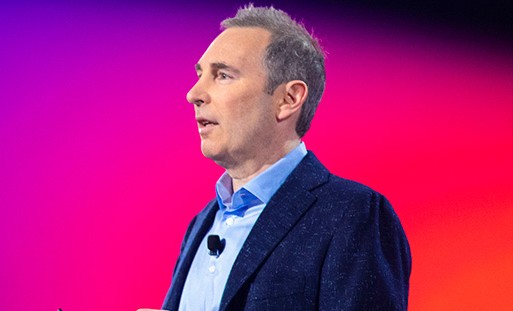Bengaluru, NFAPost: AWS re:Invent 2020, the three-week virtual event organised by Amazon Web Services, made new announcements at a time when economies are going through a turbulent phase with the Covid-19 pandemic and dramatic shift to the digital platform in human life.
As every business across the globe are forced to move to digital platform to continue their operation effectively there is a need to focus more on how to manage the business the operation via cloud. The three-week virtual event is witnessing new announcements to wade through this peculiar shift in approach.
According to Arvian Research, the coming decade will witness a new ecosystem built around a hyper-disaggregated system that spans the public cloud, on-premises/hybrid installations, cross-cloud connections, and an expansion to the edge.
“It will bring a paradigm shift. All new software and infrastructure innovations built on this system will have a deep impact on every industry and power a digital revolution. This will permanently change the lives of most people on the planet,” states Arvian Research.

AWS, the world’s leading public cloud provider, made few announcements to make the customers be better prepared and take head on these challenges. Following are the summary of the announcements made at the event.
- AWS Announces Five New Capabilities for Amazon Connect
- Amazon Connect is an easy to use omnichannel cloud contact center that helps companies of all sizes provide superior customer service at a lower cost. More than 10 years ago, Amazon’s retail business needed a contact center that would give customers a personal, dynamic and natural experience. It didn’t exist, so we built it. AWS made this available on the cloud, and today thousands of companies ranging from 10 to tens of thousands of agents use Amazon Connect to serve millions of customers daily. With Amazon Connect, organizations like Capital One, Intuit, and Dow Jones get a contact center that can be configured and set up in minutes, requires no infrastructure to deploy or manage, is easy to use, includes embedded machine learning, scales up and down as call volumes change, and is much more cost effective since companies only pay for the time agents are actually interacting with customers.
- AWS Announces Three New Analytics Capabilities
- AQUA (Advanced Query Accelerator) for Amazon Redshift is a distributed and hardware-accelerated cache for Amazon Redshift; an innovation that improves performance for analytics at the new scale of data. AQUA brings compute to the storage layer, so data does not have to move back and forth between the two. This enables Redshift to run up to 10x better query performance than other cloud data warehouses. AQUA’s preview is now open to all customers and AQUA will be generally available in January 2021.
o AWS announced five new machine learning services help industrial and manufacturing customers embed intelligence in their production processes in order to improve operational efficiency, quality control, security, and workplace safety – Amazon Monitron, Amazon Lookout for Equipment, the AWS Panorama Appliance, the AWS Panorama SDK, and Amazon Lookout for Vision. Together, these services combine sophisticated machine learning, sensor analysis, and computer vision capabilities to address common technical challenges faced by industrial customers, and represent the most comprehensive suite of cloud-to-edge industrial machine learning services available. This is why more than a hundred thousand customers are using AWS for machine learning, and why customers of all sizes and across all industries are using AWS services to make machine learning core to their business strategy.
o AWS is announcing Amazon DevOps Guru, a fully-managed operations service that uses machine learning to make it easier for developers to improve application availability by automatically detecting operational issues and recommending specific actions for remediation.
- AWS Announces the Next Version of Amazon Aurora Serverless, a New Capability that Makes it Easier to Migrate from SQL Server to Amazon Aurora, and an Open Source Project to Help More Organizations Leave SQL Server for PostgreSQL
- AWS is announcing the new version of Aurora Serverless, called Amazon Aurora Serverless v2 (Preview), which can now scale an Aurora database instantly from hundreds to hundreds-of-thousands of transactions per second with 90% cost savings compared to provisioning for peak load, and supports all features of Amazon Aurora. It is available in preview for Amazon Aurora with MySQL compatibility today and will be available for preview for Aurora PostgreSQL early next year.
- AWS Announces Four New Container Capabilities
- Amazon Elastic Container Service (Amazon ECS) Anywhere, which allows customers to use Amazon ECS to orchestrate containers in their own data centers using the same cloud-based, fully-managed, and highly scalable container orchestration service they use in AWS today.
- Amazon Elastic Kubernetes Service (Amazon EKS) Anywhere, which provides customers the ability to run Amazon EKS in their own data centers, and Amazon EKS Distro, which is a distribution of the same open source Kubernetes and dependencies deployed by Amazon EKS for customers to manually create Kubernetes clusters.
- AWS Proton, which provides developers with a new service to automate container and serverless application development and deployment.
- Amazon Elastic Container Registry (Amazon ECR) Public, which provides developers an easy and highly available way to share and deploy container software publicly. Amazon ECR Public seamlessly integrates with services such as AWS Fargate, Amazon ECR and AWS Marketplace to make it even easier for AWS customers to consume publicly distributed container software. Additionally, a new website called Amazon ECR Public Gallery will allow anyone to browse and search for public container images, view developer-provided details, and see pull commands – all without needing to sign in to AWS.
- AWS Announces Four Storage Innovations
- AWS is announcing four storage innovations that deliver added performance, resiliency, and value to customers by delivering the first storage area network (SAN) built for the cloud, automatically tiering customers data so they can save money on information that is not being accessed often, and making it easier for customers to replicate data and move it around the world as needed to help them manage their data more effectively.
- Boom Supersonic Goes All-In on AWS
- Boom Technology, Inc. (Boom Supersonic), a Denver-based aviation company that is bringing commercial supersonic flight back to the skies, is going all-in on AWS. Boom Supersonic is leveraging the world’s leading cloud to provide the company with the virtually unlimited compute power, storage, security, and comprehensive set of services that it will take to reinvent supersonic commercial travel. The company is designing the first supersonic airliner in decades, called Overture, which will roll out in 2025, and will fly more than 500 transoceanic routes in half the time. For example, Overture will take passengers from Tokyo to Seattle in four and a half hours. Since its inception, Boom has leveraged AWS’s unmatched portfolio of services to accelerate the design and construction of its aircraft, including XB-1 – the demonstrator airplane for Overture and the world’s first independently developed supersonic aircraft – which Boom unveiled on October 7, 2020.
- AWS and Zoom Extend Strategic Relationship
- Zoom Video Communications, Inc.has selected AWS as its preferred cloud provider. The multi-year agreement extends the longstanding relationship between the two companies, enabling Zoom to rapidly scale its service on the world’s leading cloud, rise to the challenges brought by the COVID-19 pandemic, and deliver reliable services and continuous innovation for its expanding base of corporate and individual customers. Zoom will continue to leverage AWS’s global infrastructure and unmatched portfolio of services – including capabilities in compute, storage, content distribution, and security – to create a seamless, secure extension of its data centers. In addition, AWS and Zoom are collaborating to develop new solutions for Zoom’s enterprise users, leveraging the breadth and depth of AWS to integrate Zoom services with Amazon devices and capabilities to make it easier for organizations to run hybrid office and remote work models.
- AWS and BlackBerry Join Forces to Accelerate Innovation with New Intelligent Vehicle Data Platform
- BlackBerry Limited, a worldwide leader in intelligent security software and services, announced a multi-year, global agreement to develop and market BlackBerry’s Intelligent Vehicle Data Platform, IVY. BlackBerry IVY is a scalable, cloud-connected software platform that will allow automakers to provide a consistent and secure way to read vehicle sensor data, normalize it, and create actionable insights from that data both locally in the vehicle and in the cloud. Automakers can use this information to create responsive in-vehicle services that enhance driver and passenger experiences.
- AWS Announces Multiple New Compute Innovations, Including Five New Instance Types for AmazonEC2, and Two New AWS Outposts SKUs
- AWS is announcing six new Amazon EC2 instances (Mac, C6gn, G4ad, M5zn, D3/D3en, R5b) that further extend AWS’s leadership in compute with the broadest array of instances and instance types for running the most workloads in the cloud. We’re also announcing new AWS Outposts form factors for customers with limited space on-premises.
- AWS Announces Mac Instances for Amazon EC2
- AWS announced its new Mac instances (EC2 Mac instances) for Amazon Elastic Compute Cloud (Amazon EC2). Built on Mac mini computers, EC2 Mac instances enable customers to run on-demand macOS workloads in the AWS cloud for the first time ever, extending the flexibility, scalability, and cost benefits of AWS to all Apple developers. With EC2 Mac instances, developers creating apps for iPhone, iPad, Mac, Apple Watch, Apple TV, and Safari can now provision and access macOS environments within seconds, dynamically scale capacity as needed, and benefit from AWS’s pay-as-you-go pricing.





